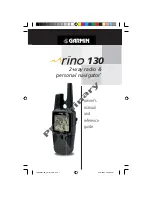
v
Introduction
Pr
eliminary
Warnings &
Precautions
not carry the radio in a breast pocket should use the ear
opposite the pacemaker to minimize the potential for
interference should turn the radio OFF immediately if you
have any reason to suspect that interference is taking place
Hearing Aids
- Some digital wireless radios may interfere
with some hearing aids. In the event of such interference,
you may want to consult your hearing aid manufacturer to
discuss alternatives.
Other Medical Devices
- If you use any other personal
medical device, consult the manufacturer of your device
to determine if it is adequately shielded from external RF
energy. Your physician may be able to assist you in obtain-
ing this information.
Turn your radio OFF in health care facilities when any
regulations posted in these areas instruct you to do so.
Hospitals or health care facilities may be using equipment
that could be sensitive to external IRF energy.
Vehicles
- RF signals may affect improperly installed or
inadequately shielded electronic systems in motor vehicles.
Check with the manufacturer or its representative regard-
ing your vehicle. You should also consult the manufacturer
of any equipment that has been added to your vehicle.
Posted Facilities
- Turn your radio OFF in any facility
where posted notices so require.
Commercial Aircraft
- Many commercial airlines prohibit
the use of FRS radios on board. Switch OFF your radio
before boarding an aircraft or check the airline rules.
Blasting Areas
- To avoid interfering with blasting opera-
tions, turn your radio OFF when in a “blasting area” or in
areas posted: “Turn off two-way radio.” Obey all signs and
instructions.
Potentially Explosive Atmospheres
- Turn your radio
OFF and do not remove your battery when you are in any
area with a potentially explosive atmosphere. Obey all
signs and instructions. Sparks from your battery in such
areas could cause an explosion or fi re resulting in bodily
injury or even death.
Areas with a potentially explosive atmosphere are often,
but not always clearly marked. They include fueling
ares such as gasoline stations, below deck on boats, fuel
or chemical transfer or storage facilities; vehicles using
liquefi ed petroleum gas (such as propane or butane); areas
where the air contains chemicals or particles, such as
d
l
d
d
h
h
190-00284-00_Prelim_FCC.indd v
9/18/2003, 3:50:43 PM








































